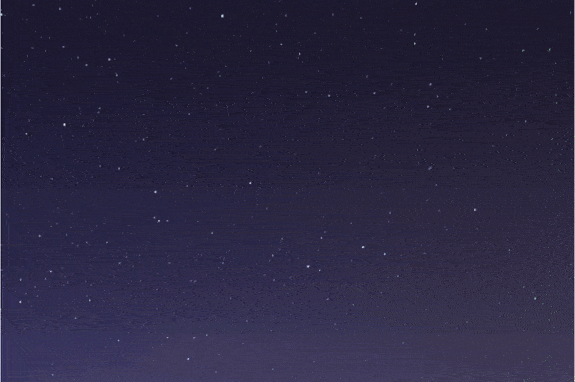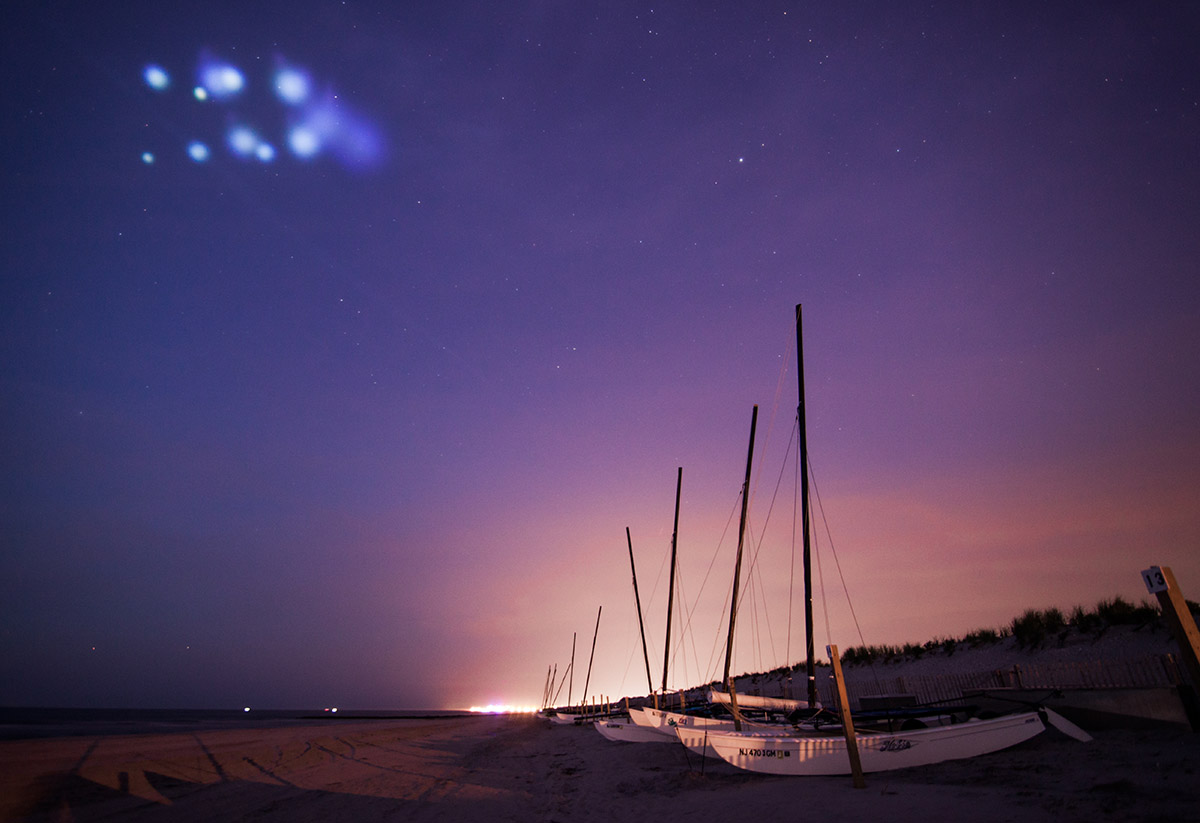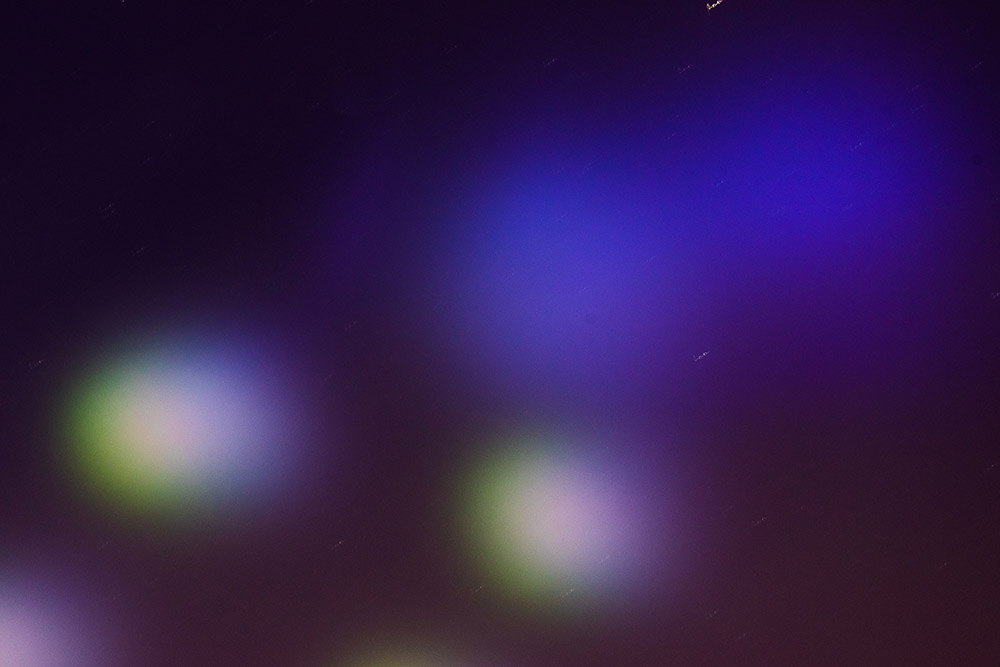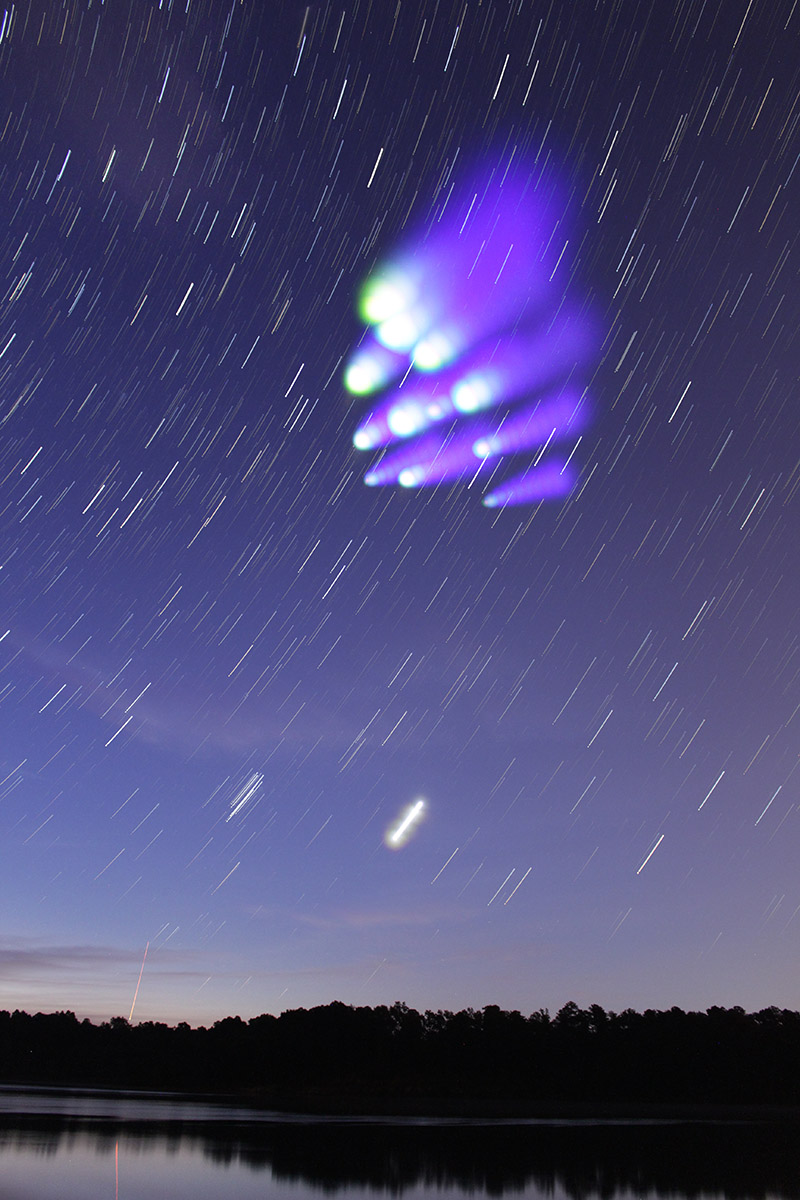Cloud-Spawning Rocket Wows Early-Bird Photographers (Photos)

When NASA finally launched its long-awaited sounding-rocket mission from Wallops Island, Virginia, early-bird viewers along the U.S. East Coast were treated to a spectacular show of glowing, multicolor clouds drifting through the sky.
Photographers woke up early to see the colorful display on several occasions, only to learn that the launch had been repeatedly delayed due to weather conditions. But when the mission finally blasted off on Thursday (June 29) at 4:25 a.m. EDT (0825 GMT), some persistent photographers finally had their chance to capture some incredible photos of the artificial clouds.

In Stone Harbor, New Jersey, photographer Chris Bakley had been waiting for weeks to shoot the colorful vapor clouds after NASA's sounding-rocket launch. "To be honest I wasn't expecting much from the launch but to see a whole sky full of glow-in-the-dark clouds," Bakley told Space.com in an email. "I was really impressed, to say the least."
About 5 minutes after the rocket lifted off from NASA's Wallops Flight Facility, it released barium, strontium and cupric oxide into the sky. When those chemicals interacted, they formed blue-green and red clouds that slowly faded to purple as they dissipated in the morning sky.

Harrison Jones was up "bright and early" to get some photos of the launch from Hanover, Pennsylvania, he told Space.com in an email. Jones managed to get some zoomed-in shots of the multicolored clouds from about 200 miles (320 kilometers) northwest of the launch site in Wallops Island.
And in Williamsburg, Virginia, photographer Chris Becke had an excellent view of the sounding rocket's colorful vapor clouds. "I had received some prior information on the launch angle and release height of the canisters as well as the range of possible drift. Using this information, I did some trigonometry calculations to predict the necessary field of view to capture the launch and subsequent vapor trails," Becke told Space.com in an email.

Becke went to "a reasonably dark site" called Little Creek Dam, located about 81.5 miles (131 km) from the launch site. There, he captured I captured 20-second exposures of the launch up until about 24 minutes after launch, "when the vapor trails had drifted out of the field of view," he said.
Get the Space.com Newsletter
Breaking space news, the latest updates on rocket launches, skywatching events and more!
Editor's note: If you have an amazing night sky photo you'd like to share with us and our news partners for a possible story or gallery, send images and comments to spacephotos@space.com.
Email Hanneke Weitering at hweitering@space.com or follow her @hannekescience. Follow us @Spacedotcom, Facebook and Google+. Original article on Space.com.
Join our Space Forums to keep talking space on the latest missions, night sky and more! And if you have a news tip, correction or comment, let us know at: community@space.com.

Hanneke Weitering is a multimedia journalist in the Pacific Northwest reporting on the future of aviation at FutureFlight.aero and Aviation International News and was previously the Editor for Spaceflight and Astronomy news here at Space.com. As an editor with over 10 years of experience in science journalism she has previously written for Scholastic Classroom Magazines, MedPage Today and The Joint Institute for Computational Sciences at Oak Ridge National Laboratory. After studying physics at the University of Tennessee in her hometown of Knoxville, she earned her graduate degree in Science, Health and Environmental Reporting (SHERP) from New York University. Hanneke joined the Space.com team in 2016 as a staff writer and producer, covering topics including spaceflight and astronomy. She currently lives in Seattle, home of the Space Needle, with her cat and two snakes. In her spare time, Hanneke enjoys exploring the Rocky Mountains, basking in nature and looking for dark skies to gaze at the cosmos.









